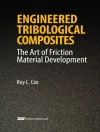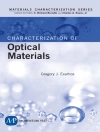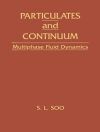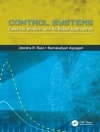When using numerical simulation to make a decision, how can its
reliability be determined? What are the common pitfalls and
mistakes when assessing the trustworthiness of computed
information, and how can they be avoided?
Whenever numerical simulation is employed in connection with
engineering decision-making, there is an implied expectation of
reliability: one cannot base decisions on computed information
without believing that information is reliable enough to support
those decisions. Using mathematical models to show the reliability
of computer-generated information is an essential part of any
modelling effort.
Giving users of finite element analysis (FEA) software an
introduction to verification and validation procedures, this book
thoroughly covers the fundamentals of assuring reliability in
numerical simulation. The renowned authors systematically guide
readers through the basic theory and algorithmic structure of the
finite element method, using helpful examples and exercises
throughout.
* Delivers the tools needed to have a working knowledge of the
finite element method
* Illustrates the concepts and procedures of verification and
validation
* Explains the process of conceptualization supported by virtual
experimentation
* Describes the convergence characteristics of the h-, p- and
hp-methods
* Covers the hierarchic view of mathematical models and finite
element spaces
* Uses examples and exercises which illustrate the techniques and
procedures of quality assurance
* Ideal for mechanical and structural engineering students,
practicing engineers and applied mathematicians
* Includes parameter-controlled examples of solved problems in a
companion website (href=’http://www.wiley.com/go/szabo’>www.wiley.com/go/szabo)
Inhaltsverzeichnis
About the Authors.
Series Preface.
Preface.
1 Introduction.
1.1 Numerical simulation.
1.2 Why is numerical accuracy important?
1.3 Chapter summary.
2 An outline of the finite element method.
2.1 Mathematical models in one dimension.
2.2 Approximate solution.
2.3 Generalized formulation in one dimension.
2.4 Finite element approximations.
2.5 FEM in one dimension.
2.6 Properties of the generalized formulation.
2.7 Error estimation based on extrapolation.
2.8 Extraction methods.
2.9 Laboratory exercises.
2.10 Chapter summary.
3 Formulation of mathematical models.
3.1 Notation.
3.2 Heat conduction.
3.3 The scalar elliptic boundary value problem.
3.4 Linear elasticity.
3.5 Incompressible elastic materials.
3.6 Stokes‘ flow.
3.7 The hierarchic view of mathematical models.
3.8 Chapter summary.
4 Generalized formulations.
4.1 The scalar elliptic problem.
4.2 The principle of virtual work.
4.3 Elastostatic problems.
4.4 Elastodynamic models.
4.5 Incompressible materials.
4.6 Chapter summary.
5 Finite element spaces.
5.1 Standard elements in two dimensions.
5.2 Standard polynomial spaces.
5.3 Shape functions.
5.4 Mapping functions in two dimensions.
5.5 Elements in three dimensions.
5.6 Integration and differentiation.
5.7 Stiffness matrices and load vectors.
5.8 Chapter summary.
6 Regularity and rates of convergence.
6.1 Regularity.
6.2 Classification.
6.3 The neighborhood of singular points.
6.4 Rates of convergence.
6.5 Chapter summary.
7 Computation and verification of data.
7.1 Computation of the solution and its first derivatives.
7.2 Nodal forces.
7.3 Verification of computed data.
7.4 Flux and stress intensity factors.
7.5 Chapter summary.
8 What should be computed and why?
8.1 Basic assumptions.
8.2 Conceptualization: drivers of damage accumulation.
8.3 Classical models of metal fatigue.
8.4 Linear elastic fracture mechanics.
8.5 On the existence of a critical distance.
8.6 Driving forces for damage accumulation.
8.7 Cycle counting.
8.8 Validation.
8.9 Chapter summary.
9 Beams, plates and shells.
9.1 Beams.
9.2 Plates.
9.3 Shells.
9.4 The Oak Ridge experiments.
9.5 Chapter summary.
10 Nonlinear models.
10.1 Heat conduction.
10.2 Solid mechanics.
10.3 Chapter summary.
A Definitions.
A.1 Norms and seminorms.
A.2 Normed linear spaces.
A.3 Linear functionals.
A.4 Bilinear forms.
A.5 Convergence.
A.6 Legendre polynomials.
A.7 Analytic functions.
A.8 The Schwarz inequality for integrals.
B Numerical quadrature.
B.1 Gaussian quadrature.
B.2 Gauss-Lobatto quadrature.
C Properties of the stress tensor.
C.1 The traction vector.
C.2 Principal stresses.
C.3 Transformation of vectors.
C.4 Transformation of stresses.
D Computation of stress intensity factors.
D.1 The contour integral method.
D.2 The energy release rate.
E Saint-Venant’s principle.
E.1 Green’s function for the Laplace equation.
E.2 Model problem.
F Solutions for selected exercises.
Bibliography.
Index.
Über den Autor
Barna Szabó is co-founder and president of Engineering
Software Research and Development, Inc. (ESRD), the company that
produces the professional finite element analysis software
Stress Check®. Prior to his retirement from the School of
Engineering and Applied Science of Washington University in 2006 he
served as the Albert P. and Blanche Y. Greensfelder Professor of
Mechanics. His primary research interest is assurance of quality
and reliability in the numerical stimulation of structural and
mechanical systems by the finite element method. He has published
over 150 papers in refereed technical journals. Several of them in
collaboration with Professor Ivo Babu Ska, with whom he also
published a book on finite element analysis (John Wiley & Sons,
Inc., 1991). He is a founding member and Fellow of the US
Association for Computational Mechanics. Among his honors are
election to the Hungarian Academy of Sciences as External Member
and an honorary doctorate.
Ivo Babu Ska’s research has been concerned
mainly with the reliability of computational analysis of
mathematical problems and their applications, especially by the
finite element method. He was the first to address a posteriori
error estimation and adaptivity in finite element analysis. His
research papers on these subjects published in the 1970s have been
widely cited. His joint work with Barna Szabó on the p-version
of the finite element method established the theoretical
foundations and the algorithmic structure for this method. His
recent work has been concerned with the mathematical formulation
and treatment of uncertainties which are present in every
mathematical model. In recognition of his numerous important
contributions, Professor Babu Ska received may honors, which
include honorary doctorates, medals and prizes and election to
prestigious academies.












